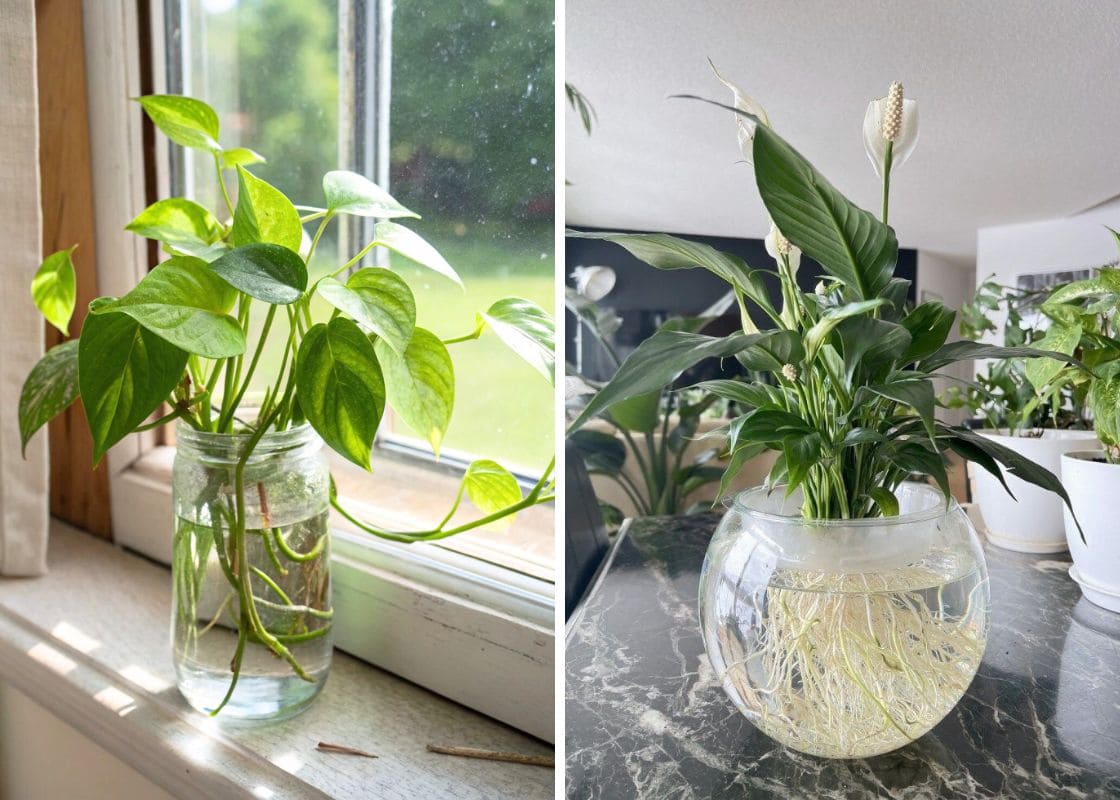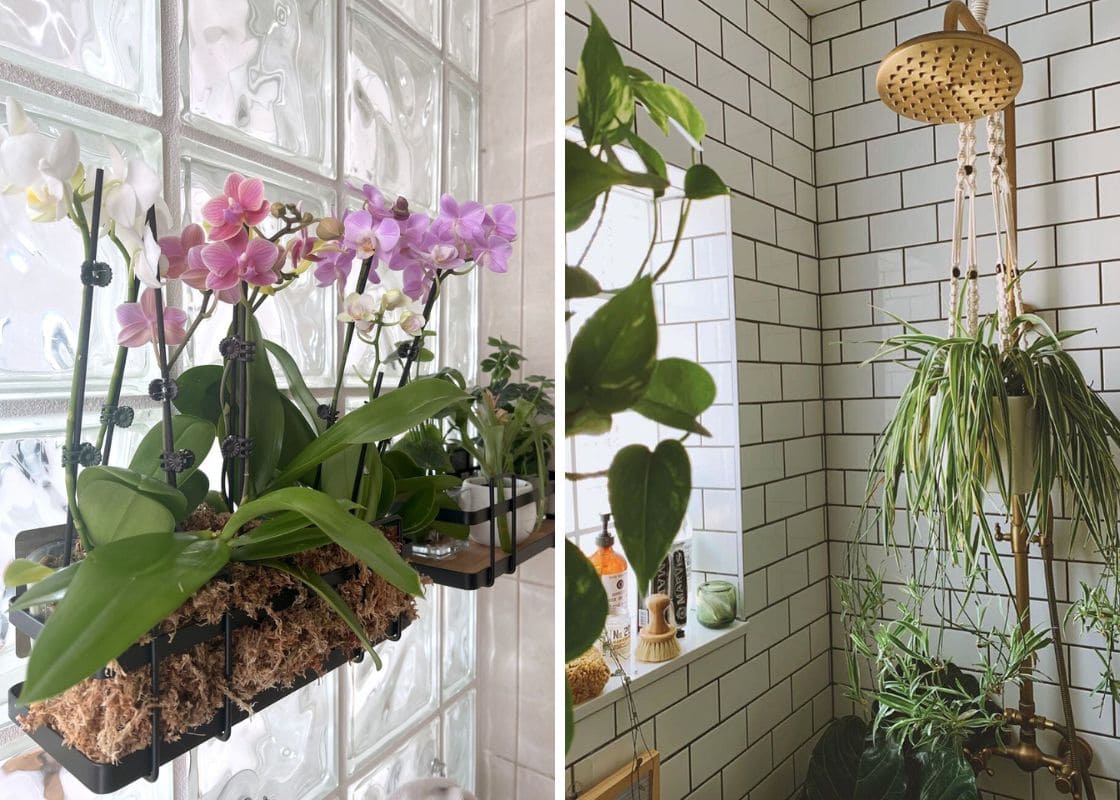Some gardeners are patient enough to wait five years for a single piece of fruit. But if you’re like me, you want to bite into the rewards a little sooner.
Thankfully, not all fruit trees take their sweet time. With the right choice and a bit of care, you can plant now and be picking your own fresh harvest in as little as one or two seasons.
Whether you’ve got a cozy backyard, a sunny balcony, or a patch of fertile soil out front, there are fruit trees that grow fast, bear early, and bring joy quickly.
Many of these trees thrive in containers, too, so you don’t need a full orchard to get started. Let’s explore ten of the fastest-yielding fruit trees that turn your gardening efforts into delicious results.
1. Fig (Ficus carica)
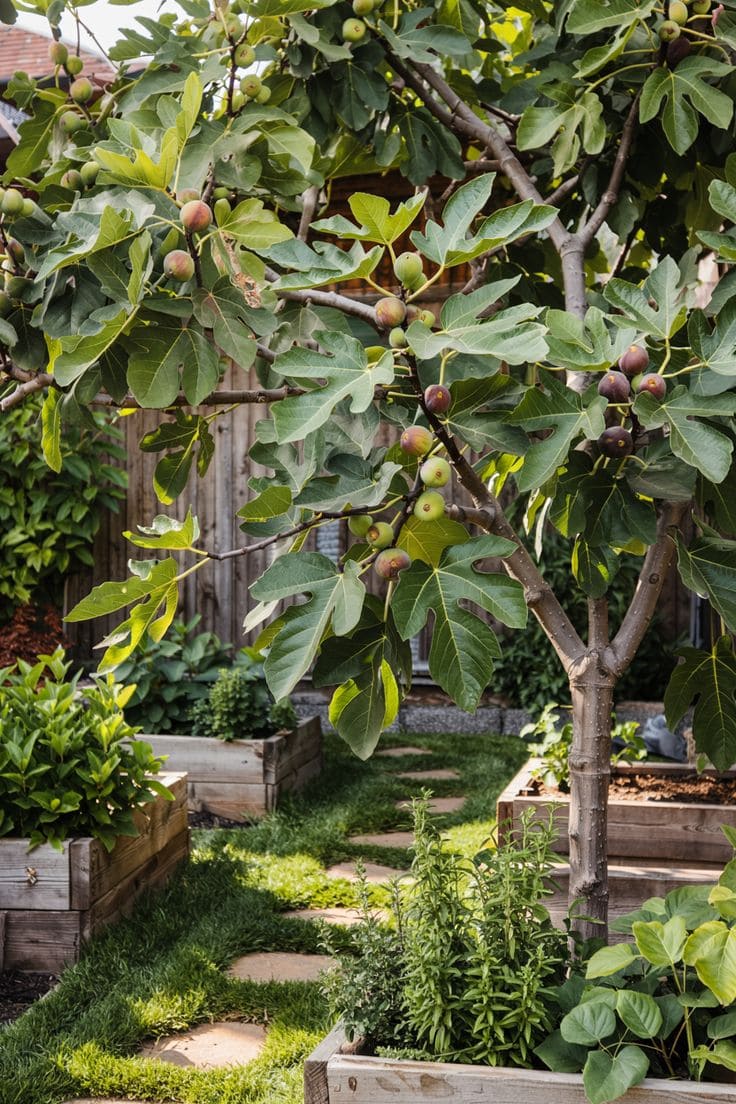
- Botanical name: Ficus carica
- Time to first harvest: 1-2 years (from transplant)
- USDA zones: 7–10
Figs are fast, forgiving, and produce sweet fruit early on. Varieties like Celeste or Brown Turkey are reliable producers even in cooler climates. They don’t require pollination, so a single tree can yield a good crop on its own.
You should plant it in full sun, in well-drained soil, and give it room to sprawl. To encourage early fruiting, prune it lightly in winter, this helps concentrate energy into fruit production.
Figs also thrive in containers, which allows gardeners in colder zones to bring them indoors during winter. Keep in mind, though, that fig trees can send out suckers, so regular trimming helps maintain both form and productivity.
2. Papaya (Carica papaya)
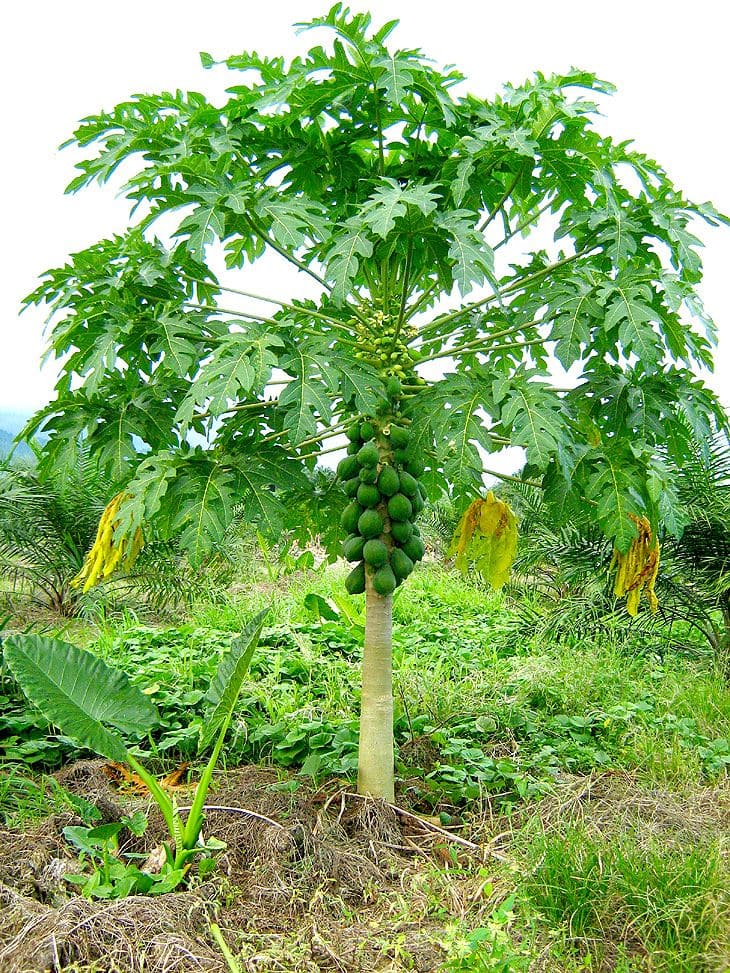
- Botanical name: Carica papaya
- Time to first harvest: 6-12 months (from seed)
- USDA zones: 10-11 (grown as annual in cooler zones)
Papaya is a fast-growing tropical plant producing full-size fruit within its first year if grown in warmth. It thrives in rich, well-drained soil with consistent moisture and high humidity.
Since most papayas are dioecious, grafted varieties labeled as self-fertile are recommended. Keep the soil mulched and support the root zone to prevent wind damage.
When grown in containers, you can move a papaya inside during cooler months. Fertilize every couple of months with a balanced feed and watch for blossom drop during cold snaps. In warmer climates, this powerhouse fruiter can become a staple in home orchards fast.
3. Mulberry (Morus spp.)
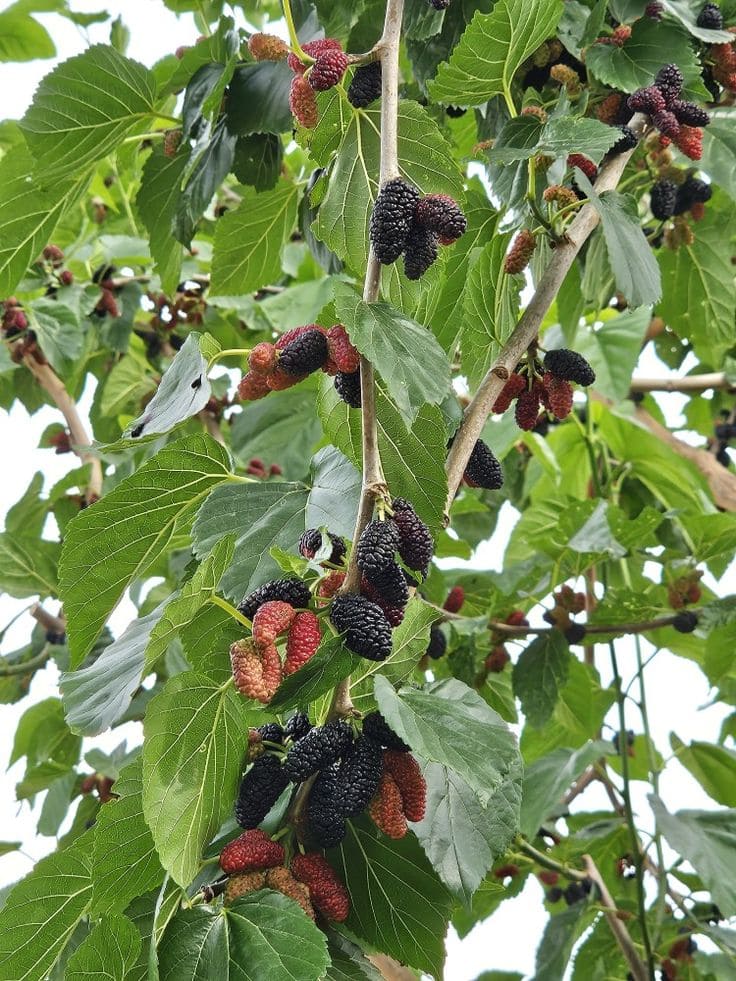
- Botanical name: Morus alba or Morus nigra hybrids
- Time to first harvest: 1-2 years
- USDA zones: 5-9
Dwarf or semi-dwarf mulberries like Illinois Everbearing are perfect for quick yields in small gardens. Some will fruit even in their first year after planting.
They grow in almost any well-drained soil but thrive best in full sun with moderate water. These trees are low-maintenance and don’t need special pruning, except to maintain size.
Mulberries are attractive to birds, so consider netting or early harvesting. You can use berries fresh, in pies, or dried like raisins.
If birds or raccoons are a concern, setting up timed garden nets that you can remove daily helps balance wildlife and fruit every morning.
4. Dwarf Peach (Prunus persica)
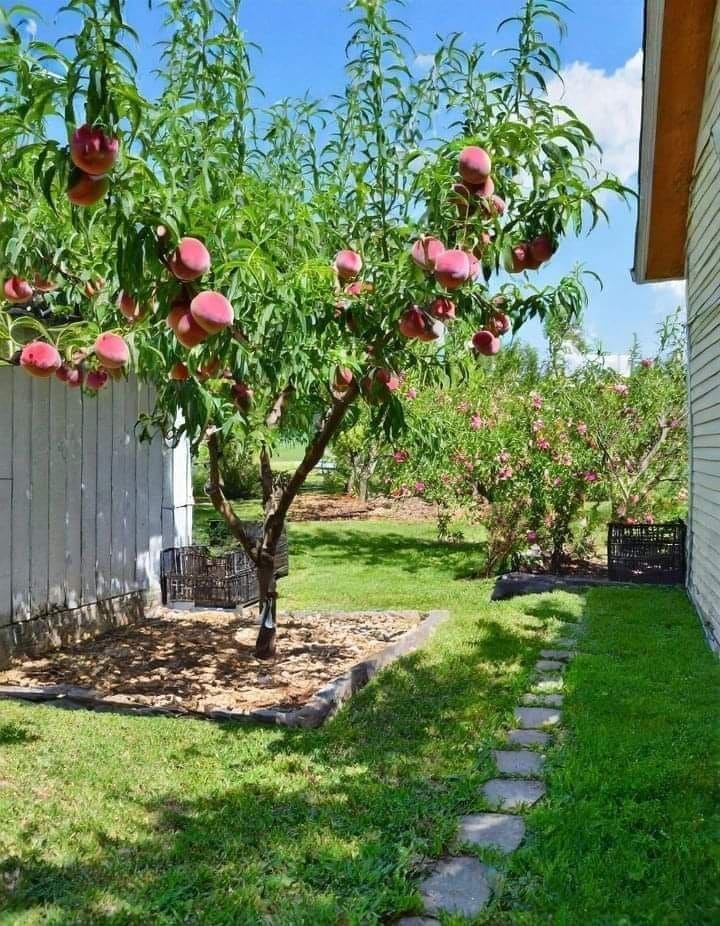
- Botanical name: Prunus persica
- Time to first harvest: 1-2 years (grafted dwarf tree)
- USDA zones: 5-9
Dwarf peach trees such as Bonanza or Garden Gold are bred to bear quickly and stay compact, ideal for containers or small spaces. These trees begin fruiting as early as their second spring after planting.
You want to give them full sun and regular water, and fertilize lightly in early spring. Because peaches bloom early, late frost protection is important, use frost blankets if necessary.
Also, keeping the canopy open improves airflow and fruit ripening. Expect sweet, juicy peaches that rival supermarket produce. For best flavor, harvest when the fruit gives slightly under gentle pressure.
5. Banana (Musa spp.)
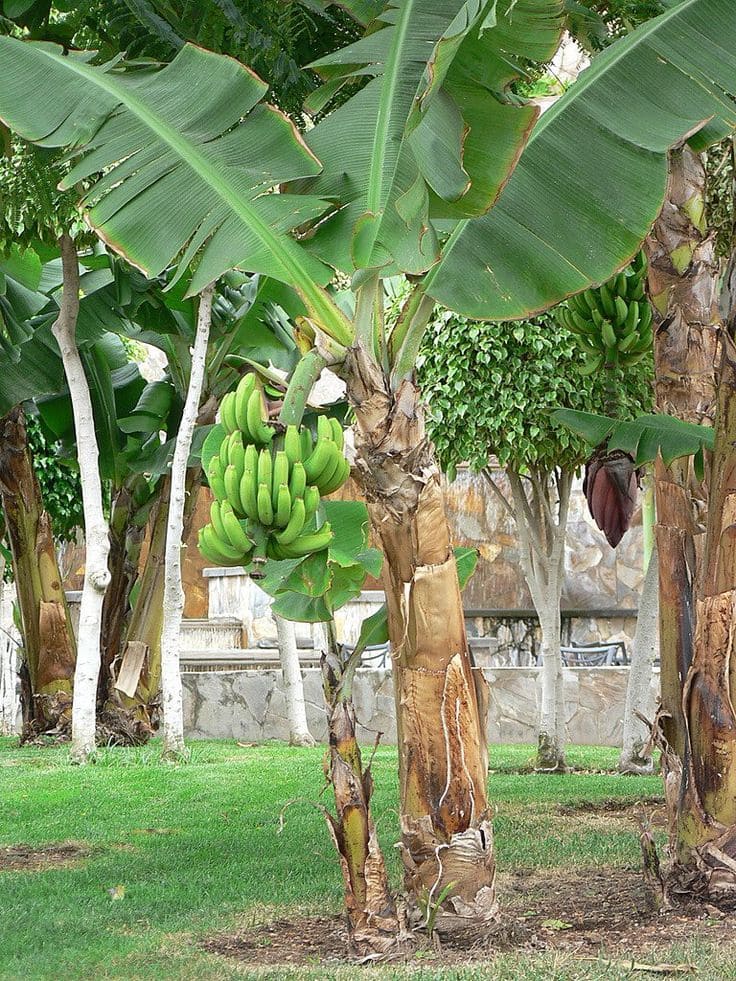
- Botanical name: Musa × paradisiaca, M. acuminata hybrids
- Time to first harvest: 12-18 months
- USDA zones: 9-11
Bananas can produce fruit in just over a year under warm conditions. Dwarf varieties like Dwarf Cavendish do well in containers and small yards.
They need rich soil, generous water, and protection from wind. Feeding with potassium-rich fertilizer speeds up fruit production and improves bunch quality. Also, wrap trunk when temperatures drop below 50°F, or bring them indoors.
When the main stem finishes fruiting, cut it off as new shoots at the base will continue production. In frost-free zones, bananas can become a long-term garden fixture that delivers sweet fruit quickly.
6. Guava (Psidium guajava)
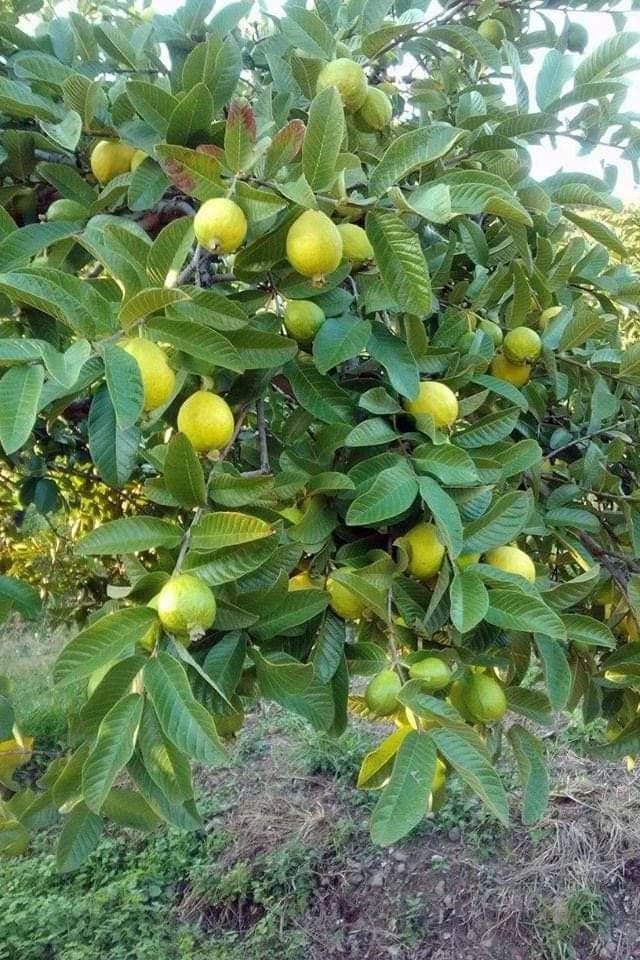
- Botanical name: Psidium guajava
- Time to first harvest: 1-2 years (grafted)
- USDA zones: 9-11
Grafted guava trees like Lemon or Tropical Pink produce fruit quickly, especially in hot, humid climates. They prefer full sun and rich, slightly acidic soil.
Regular feeding with compost or a balanced fertilizer encourages strong growth and early fruiting. Mulch well and water consistently; these trees are drought-tolerant once established but fruit best with steady moisture.
Guava fruits are delicious fresh, in jams, or dried. With protection from cold snaps and occasional pruning, guava trees can yield abundant fruit annually and fast.
7. Barbados Cherry (Malpighia emarginata)
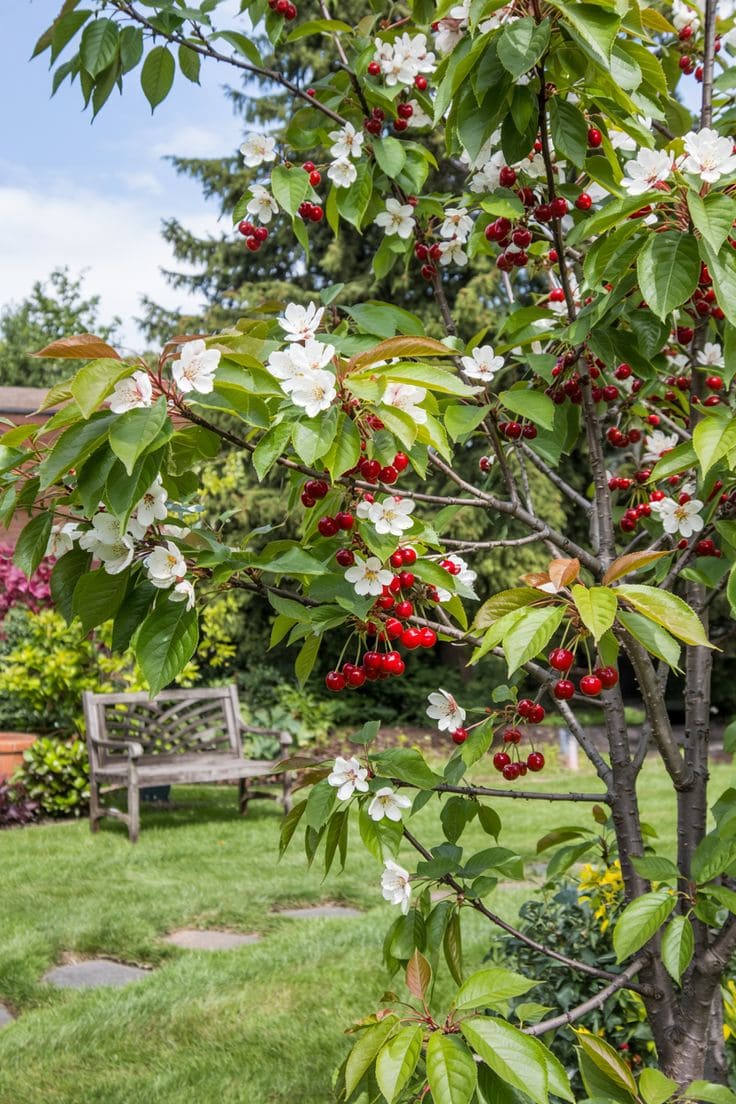
- Botanical name: Malpighia emarginata
- Time to first harvest: 1-2 years
- USDA zones: 9-11
Barbados cherry, also known as acerola, is a downy shrub-like fruiter that thrives in warm regions. It starts bearing fruit early often within two years of planting. Full sun, well-drained soil, and consistent watering are key to encouraging early yields.
These cherries ripen quickly and are packed with vitamin C, ideal for fresh eating, smoothies, or preserves. You should keep them well-pruned to encourage branching and upright growth.
Although sensitive to frost, the plant can bounce back if lightly protected. In containers, they make attractive patio fruits with fast results.
8. Meyer Lemon (Citrus × meyeri)

- Botanical name: Citrus × meyeri
- Time to first harvest: 12-24 months (grafted dwarf tree)
- USDA zones: 8-11
Meyer lemon trees breed true to form and begin fruiting earl, often in the second year when grafted on dwarf rootstock. They need full sun, well-drained soil, and protection from frosty temperatures.
Regular feeding with citrus fertilizer will help maintain strong growth and fruit quality. These lemons are sweeter and less acidic than true lemons, ideal for kitchen use.
Indoor growers can enjoy fruit in pots when placed near a south-facing window or under grow lights. Just be sure to rotate occasionally for balanced growth.
9. Passion Fruit (Passiflora edulis)

- Botanical name: Passiflora edulis
- Time to first harvest: 12-18 months
- USDA zones: 9-11 (perennial); 7-8 (annual)
Passion fruit vines are vigorous and fast to yield, often in their first or second season. You should plant in full sun with rich, well-drained soil, and provide trellis support early.
Regular feeding and watering enhance vine growth and flowering. You can also protect from frost by mulching or using frost cloth.
Flowers emerge early, followed by thick-skinned passion fruits that fill with sweet, aromatic jelly pulp. You need to prune in early spring to encourage new shoots and maintain a manageable shape. In warm gardens, it’s a spectacular and productive vine.
10. Almond (Prunus dulcis, self-fertile dwarf)
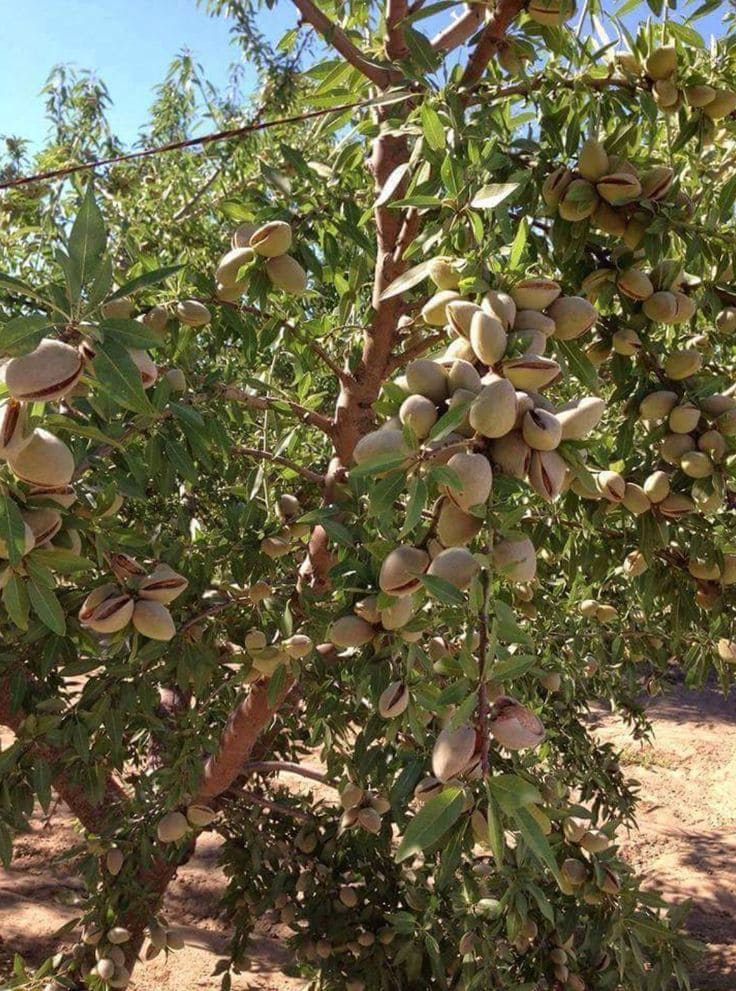
- Botanical name: Prunus dulcis
- Time to first harvest: 1-2 years (dwarf, self-pollinating)
- USDA zones: 7-9
Dwarf almond trees like Garden Prince are self-pollinating and can bear nuts early. They perform best in full sun and well-drained soil, needing moderate irrigation as they establish.
A small amount of nitrogen-rich fertilizer in spring encourages both growth and nut production. The lovely pink blossoms appear in early spring, followed by young nut shells by late summer. You also need to avoid waterlogged conditions to prevent root rot.
For garden-friendly spacing, train on a single stem with occasional thinning of inward-straying branches. You’ll be enjoying fresh almonds or ornamental flowers in little more than a year.


